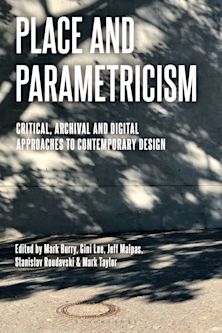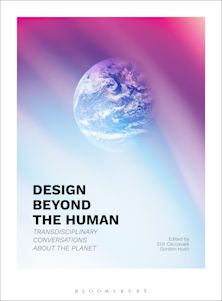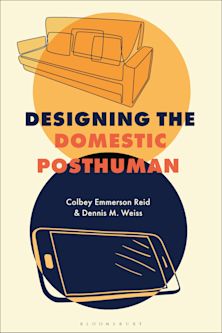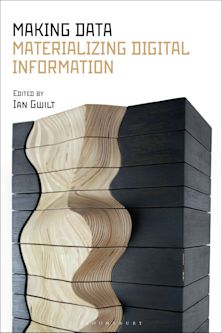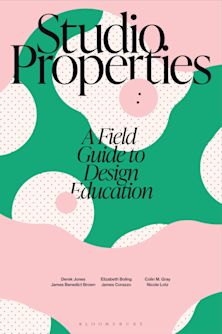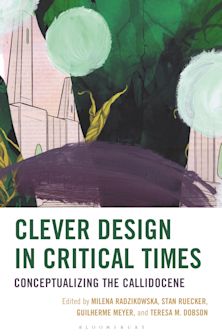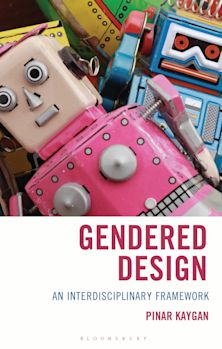This product is usually dispatched within 3 days
- Delivery and returns info
-
Free US delivery on orders $35 or over
Description
What is design philosophy and why is it needed? This important book explains the discipline's recent emergence, the key questions which dominate it, and its potential to fundamentally change the way we practice and think about design.
The reader comprises eight thematic sections, each featuring a short, contextualising introduction and an annotated bibliography. It considers social, graphic, product and industrial design, and presents the writings of such leading design thinkers and philosophers as Deleuze and Heidegger, Aristotle and Plato. With texts ranging from philosophically informed writing on design and culture, to ancient and contemporary philosophy which addresses the concept of design, The Design Philosophy Reader is an impressive and pioneering work.
Table of Contents
Introduction, Anne Marie Willis
PART 1: THE ESSENCE OF DESIGN
Introduction
1. The Fault of Epimetheus, Bernard Stiegler
2. In the Beginning, Tony Fry
3. A Cautious Prometheus? A Few Steps Toward a Philosophy of Design, Bruno Latour
4. The Depth of Design, Albert Borgmann
5. Design as an Ontological Question, Tony Fry
Guide to Further Reading
PART 2: THE PRACTICE OF DESIGN
Introduction
6. Science, Art and Practical Wisdom, Aristotle
7. The Complication of Praxis, William McNeill
8. The Existential Self as Locus of Sustainability in Design, Philippe d'Anjou
9. Science of the Concrete, Claude Levi-Strauss
10. The Textility of MakingTim Ingold
Guide to Further Reading
PART 3: THE ETHOS OF DESIGN
Introduction
11. Artefacts: the Making Sentient of the External World, Elaine Scarry
12. Ethics by Design or the Ethos of Things, Cameron Tonkinwise
13. Grievability, Judith Butler
14. The One for the Other Adrian Peperrzak
15. Ethics in the Making, Bodil Jönsson et al
Guide to Further Reading
PART 4: DESIGN AND THE OTHER
Introduction
16. On Coloniality of Knowledge, Madina V. Tlostanova
17. The Enframing Gaze, Timothy Mitchell
18. The Violence of Humanitarian Design, Mahmoud Keshavarz
19. The Force of Form, the Effect of Genre, Francois Jullien
20. Why Not an Alphabet? Lothar Ledderose Guide to Further Reading
Guide to Further Reading
PART 5: BEING DESIGNED AND THINGS
Introduction
21. The Thing, Martin Heidegger
22. Materialism is Not the Solution: On Matter, Form, and Mimesis Graham Harman
23. Is Design Finished? Dematerialisation and Changing Things, Cameron Tonkinwise
24. Beyond Affordance Michael May
25. Understanding, Ontology, Thrownness and Readiness-to-hand, Terry Winograd and Fernando Flores
26. Smart meters don't make us any smarter Elizabeth Shove and Sarah Royston
27. Matter and Mattering or Why are Things "Us"? Clive Dilnot
Guide to Further Reading
PART 6: THE DESIGNING OF TECHNOLOGY
Introduction
28. Technology: Instrumental Metaphor and Cybernetic System, Adrian Snodgrass
29. The Question Concerning Technology, Martin Heidegger
30. Technical Mentality, Simondon
31. The Finite Framework of Language, Michael Heim
32. 'This System Does Not Produce Pleasure Anymore' Bernard Stiegler
Guide to Further Reading
PART 7: THE DESIGNING OF VISUALITY
Introduction
33. Form and Imitation Plato
34. The Plato Effect in Architecture Chistopher N. Henri
35. Age of the World Picture, Martin Heidegger
36. An Art Which Imitates Art Pierre Bourdieu
37. Sign Function and Class Logic Jean Baudrillard
38. Henri Lefebvre, The Production of Space
Guide to Further Reading
PART 8: DESIGNING AFTER THE END
Introduction
39. What is the Anthropolitical? Claire Colbrook
40. The Intrusion of GAIA Isobel Stengers
41. Cosmoecological Sheep Vinciane Despret and Michel Meuret
42. Outing Artificial Intelligence: Reckoning with Turing Tests Benjamin H. Bratton
43. The Posthuman Rosi Braidotti
44. The Sustainment Tony Fry
45. Spinoza and Us Gilles Deleuze
Guide to Further Reading
Bibliography
Index
Product details
| Published | Nov 29 2018 |
|---|---|
| Format | Paperback |
| Edition | 1st |
| Extent | 320 |
| ISBN | 9780857853509 |
| Imprint | Bloomsbury Visual Arts |
| Dimensions | 10 x 7 inches |
| Publisher | Bloomsbury Publishing |











